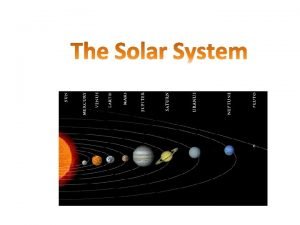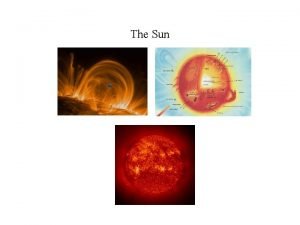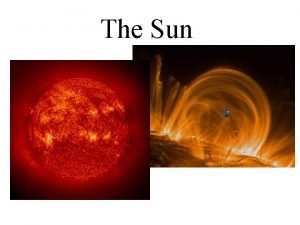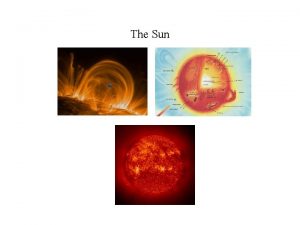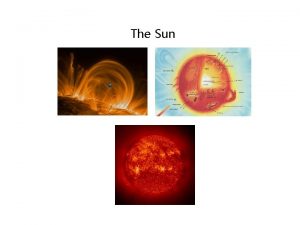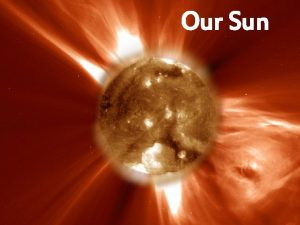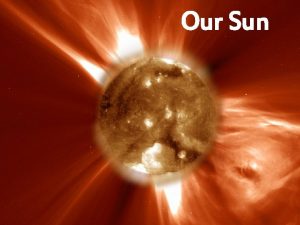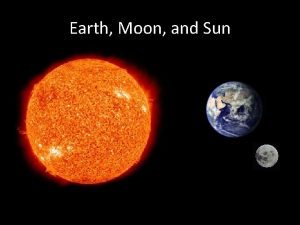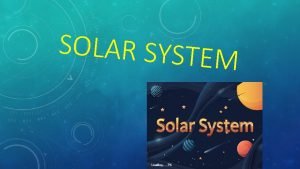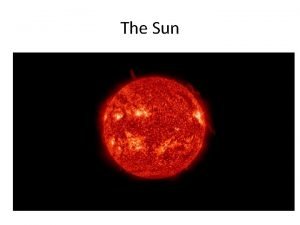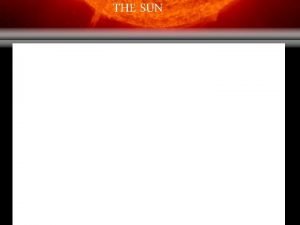Fast Fact The Sun The sun is a

















- Slides: 17

Fast Fact

The Sun The sun is a medium sized star that provided us with warm sunlight that we need. It is the nearest star to Earth and it takes 8 minutes for the sun’s light to reach Earth

Mercury is the closest planet to the sun that is 58 million km from the sun. It would take 87 days to complete one orbit around the sun but it would take 58 days to complete one rotation.

Venus is 108 million miles from the sun. To complete

Earth is the third planet from the sun and it is a rocky planet that is located in the goldilocks zone that support life. It’s gravity is strong enough to keep Luna in Earth’s orbit. And the mass of Earth is

Luna • Luna is Earth’s moon and have impact to the people on Earth such as the high and tide. Earth Gravity is trapping Luna and the Moon is about 384, 400 kilometers from Earth

Mars is red colored planet and it is red because of it’s rich iron surface. Mars have 2 moons Phobos and Deimos. It’s distance from the sun is 228 million kilometer. To complete one orbit around the sun will take 1 -2 Earth years. One rotation is equal to 24 -25 hours. It’s gravity is 38% compared to Earth

Jupiter is the largest planet in our solar system and it has the most moons in our solar system. It is 779 million kilometers from the sun. it would take 11 -12 Earth years to complete one Earth years but it take only 10 hours. The gravity compared to Earth is 253% than Earth

Saturn Distance from the sun: 1, 433 million km Mass: 95 times the size of Earth Moons: 62 Years, Months, Days: 29 -30 Earth Years, 10 -11 Earth hours • Properties: Mostly Hydrogen and helium • •

Uranus • Distance from the Sun: 2, 877 million km • Moons: 27 • Years, Months, Days: 84 -85 Earth years, 17 -18 Earth hours • Properties: Hydrogen , helium, methane

Neptune Distance from the Sun: 4, 503 million km Mass: 54 times bigger than earth Moons: 13 Years, Months, Days: 164 -165 Earth Years for one Rotation, 16 -17 Earth hours for one rotation • Properties: hydrogen , helium, methane • •

Moons are the natural satellites of planets that orbits them. This moons have a different mass some is small but some is big. The Earth moon Luna is one of the moon in our solar system.

Asteroids are chunks of rocks floating in space most of it are orbiting the sun in the asteroid belt. Asteroid doesn’t have mush gravity so it is easily influenced by planet’s gravity.

Meteorite Meteoroid is a sand to a boulder sized particle of debris in the solar system. The visible path of a meteoroids that enters Earth’s atmosphere is known as the meteor or its called as the shooting star or the falling star. If a meteoroids reach a ground and it survives by not destroyed into a sand it is called the meteorite

Comets are made mostly of water ice, carbon dioxide, dry ice, and several other types, and rock. The Ice are the cause of the tail that are seen from Earth when melting.

Stars

Galaxy
 Acid fast vs non acid fast
Acid fast vs non acid fast Acid fast vs non acid fast
Acid fast vs non acid fast Sun fact file
Sun fact file Sun fact sheet
Sun fact sheet Sun fact sheet
Sun fact sheet độ dài liên kết
độ dài liên kết Thiếu nhi thế giới liên hoan
Thiếu nhi thế giới liên hoan Hát lên người ơi
Hát lên người ơi điện thế nghỉ
điện thế nghỉ Một số thể thơ truyền thống
Một số thể thơ truyền thống Trời xanh đây là của chúng ta thể thơ
Trời xanh đây là của chúng ta thể thơ Hệ hô hấp
Hệ hô hấp Bảng số nguyên tố lớn hơn 1000
Bảng số nguyên tố lớn hơn 1000 Tỉ lệ cơ thể trẻ em
Tỉ lệ cơ thể trẻ em Tia chieu sa te
Tia chieu sa te đặc điểm cơ thể của người tối cổ
đặc điểm cơ thể của người tối cổ Các châu lục và đại dương trên thế giới
Các châu lục và đại dương trên thế giới ưu thế lai là gì
ưu thế lai là gì


